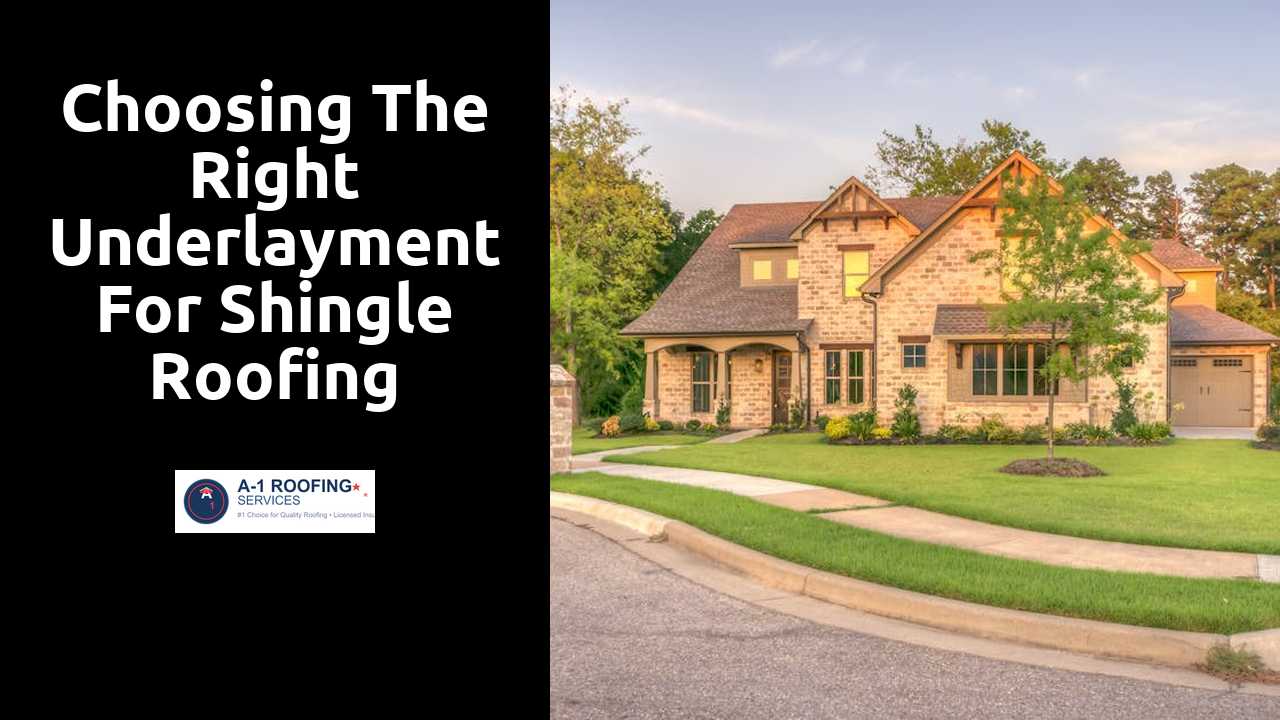
Choosing the Right Underlayment for Shingle Roofing
Table Of Contents
Cost Considerations for Underlayment
When determining the costs associated with underlayment, it's essential to recognize that prices can vary significantly based on material type and quality. Traditional felt paper is often one of the more affordable options, but higher-end products like synthetic underlayment provide increased durability and water resistance. Investing in more advanced materials can lead to greater long-term savings by reducing the likelihood of water damage and repair costs over time.
In addition to material expenses, labor costs should also be factored into the budget. Professional installation can enhance the performance and longevity of the roofing system, but it adds to the overall expenditure. Planning for these costs upfront can help homeowners avoid unexpected financial strain during roofing projects. Prioritizing quality while remaining mindful of budget constraints is key to making an informed decision.
See here for more great tips.
Budgeting for Quality vs. Cost-Effective Choices
When selecting an underlayment for shingle roofing, homeowners often find themselves weighing the benefits of quality against the allure of lower-cost options. Investing in a higher-quality underlayment can lead to improved durability and longevity for the roof. These products typically offer better protection against water infiltration and can withstand extreme weather conditions. While the initial expense may seem daunting, the potential for reduced maintenance costs over time and a lower likelihood of needing repairs can justify the investment.
On the other hand, budget-friendly choices may appeal to those looking to save upfront costs. These options can be adequate for specific climates or roofing applications. However, it is crucial to consider their limitations, such as reduced lifespan and lower resistance to moisture damage. Homeowners should evaluate their local climate, roof characteristics, and overall budget to ensure they make an informed decision, balancing cost against long-term value.
Underlayment and Building Codes
Each region has its own set of building codes that dictate the materials and installation methods used in roofing projects. Understanding these regulations is crucial for homeowners and contractors alike. Many local jurisdictions require specific types of underlayment to ensure that roofs meet safety and performance standards. Failure to comply with these codes can result in penalties and may jeopardize the integrity of the roofing system, leading to potential insurance issues down the line.
In addition to safety regulations, some areas may have environmental considerations that affect product choices. For instance, locations prone to heavy rainfall or wind may necessitate underlayment that offers enhanced moisture protection or wind resistance. Researching local building codes and consulting with professionals can help ensure that the selected underlayment aligns not only with regulatory requirements but also with the unique climate challenges faced in specific regions.
Understanding Local Regulations and Requirements
Local building codes play a crucial role in the selection of roofing underlayment. These regulations can vary significantly depending on the region, driven by factors such as climate, weather patterns, and community standards. It is essential for homeowners and contractors to familiarize themselves with the specific codes in their area to ensure compliance. Ignoring these guidelines could lead not only to costly fines but also to potential safety hazards or the need for additional work.
When researching local requirements, consulting with local building departments can provide clarity on approved materials and installation methods. Many areas also outline specific thicknesses and performance ratings for underlayment, which are designed to enhance the overall durability and efficiency of the roofing system. Adhering to these standards not only reinforces the integrity of the roof but can also impact insurance coverage and resale value in the future.
Common Mistakes in Underlayment Selection
One prevalent mistake is opting for underlayment solely based on price without considering its long-term performance. While budget constraints are a reality for many homeowners, selecting cheaper materials may lead to higher costs later due to factors like reduced durability and increased risk of moisture intrusion. This short-sighted approach can result in frequent repairs or replacements, negating any initial savings. Understanding the balance between cost and quality is essential for a long-lasting roofing solution.
Another common error is neglecting the specifications of the roofing system being used. Each type of shingle has its own requirements regarding the compatibility of underlayment. Misalignment between the underlayment and shingles can compromise the integrity of the entire roof. Homeowners should carefully review manufacturer guidelines and consider the specific environmental conditions of their location to ensure optimal performance and compliance with any applicable building codes.
Avoiding Pitfalls for a Successful Roofing Project
Proper selection of underlayment is crucial to the success of any roofing project. Many homeowners overlook the importance of this layer, opting for cheaper materials without fully understanding their implications. Quality underlayment not only enhances the roof's longevity but also provides essential moisture protection. Choosing a product that aligns with your local climate conditions and roofing style is vital for optimal performance.
Another common mistake is failing to adhere to local building codes and regulations. Each region has specific guidelines that dictate the types of materials suitable for roofing projects. Ignoring these standards can lead to delays, costly fines, or even a requirement to redo the work. Researching and consulting with professionals can help ensure your selection meets all necessary requirements, preventing headaches down the line.
Related Links
The Importance of Roof Valley Design in Shingle InstallationStep-by-Step Guide to Installing Architectural Shingles